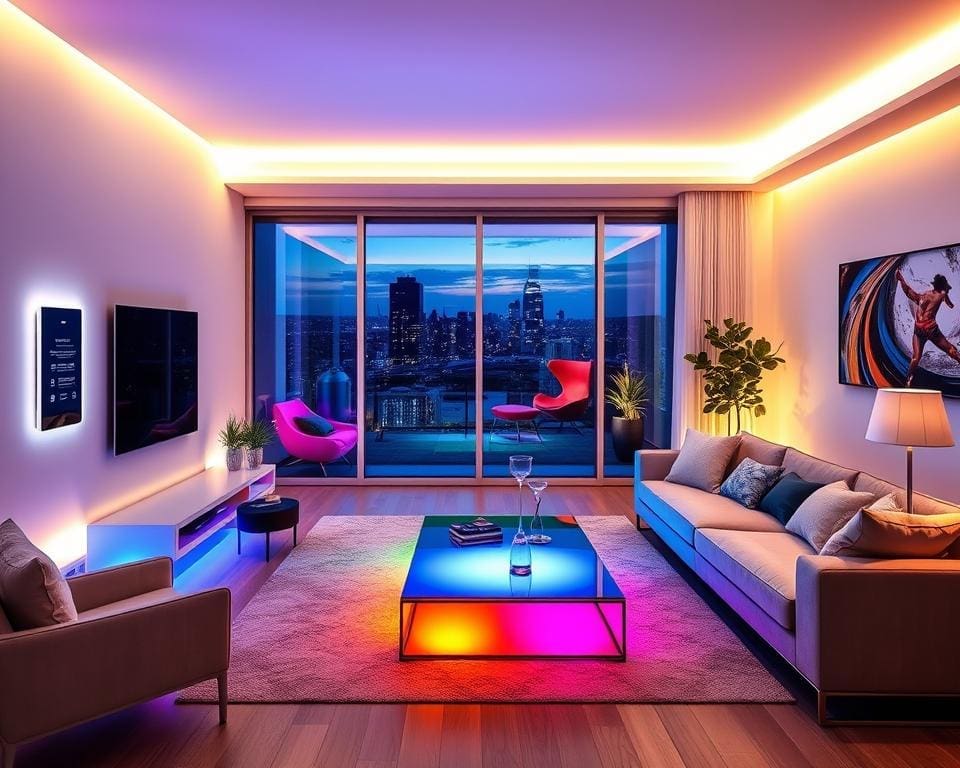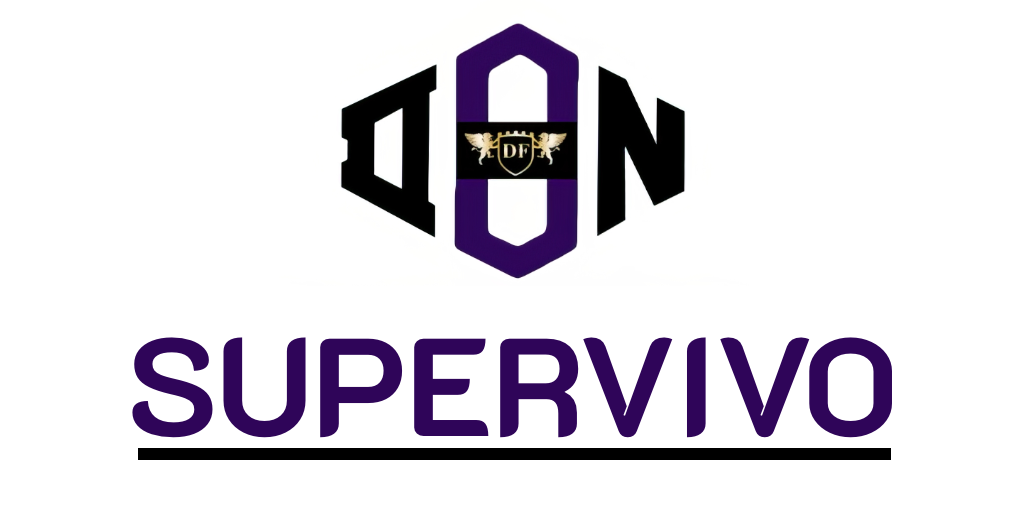In an age where technology intertwines seamlessly with our daily lives, smart lighting with touch controls stands out as a beacon of innovation in modern home lighting solutions. These advanced systems elevate the aesthetic appeal of any space while integrating smoothly into the broader spectrum of home automation lighting. The convenience of touch-enabled controls not only enhances functionality but also contributes to a sophisticated ambiance, reflecting the evolving tastes of contemporary households. As more individuals recognise the advantages of intelligent, energy-efficient solutions, embracing smart lighting becomes more than just a choice—it transforms the way we experience our living environments.
The Rise of Smart Lighting Solutions
The evolution of smart lighting technology has transformed modern home lighting solutions, moving beyond traditional methods into a realm of innovative possibilities. This advancement relies heavily on LED technology, which offers enhanced efficiency and longevity, alongside wireless connectivity and mobile app control for convenience. The intelligent integration of these components allows for greater flexibility in managing home lighting.
Understanding Smart Lighting Technology
Smart lighting technology incorporates various features that revolutionise the way we interact with light in our homes. Utilising LEDs not only decreases energy consumption but also improves the lifespan of lighting fixtures. Wireless connectivity ensures these lights can be controlled remotely, while mobile apps provide users the ability to adjust brightness, colour, and schedules according to personal preferences.
Benefits of Switching to Smart Lighting
The benefits of smart lighting are manifold. Homeowners can experience significant savings on energy bills, as these systems are designed for efficiency. Enhanced security features, such as motion detection and scheduled lighting, contribute to a safer environment. Furthermore, smart lighting can drastically improve the ambiance of a space, helping to create the desired mood. Reports suggest that homes equipped with smart lighting not only appeal to potential buyers but may also increase property values in a competitive market.

Enhancing Modern Home Aesthetics
Contemporary lighting design plays a crucial role in shaping the aesthetic appeal of modern interiors. By understanding the nuances of lighting, one can create spaces that exude sophistication and warmth, making the home more inviting. The seamless integration of light through intelligent design principles can truly transform a room.
Contemporary Lighting Design Principles
At the heart of contemporary lighting design lies the principle of layering light. This involves using a combination of ambient, task, and accent lighting to create depth and interest. Natural tones, along with a thoughtful selection of fixtures, contribute significantly to the overall atmosphere of a space. Light serves not only a functional purpose but also enhances the beauty of architectural features and furnishings.
The Role of Touch Enabled Lighting in Home Decor
Touch enabled lighting systems introduce an innovative element to home decor. These systems allow users to adjust light intensity and colour effortlessly, personalising each room according to mood and occasion. By facilitating a dynamic interplay of light, touch enabled lighting enhances the visual appeal of spaces while also addressing practical needs. Homeowners can enrich their environments, ensuring that each corner reflects their unique style while utilising contemporary lighting design concepts.
Smart Lighting with Touch Controls for a Modern Home
As interior design embraces innovative solutions, touch-controlled systems in smart lighting are becoming essential for modern homes. These systems not only enhance the aesthetic appeal of living spaces but also provide remarkable functionality, allowing users to create their ideal atmospheres effortlessly.
Key Features of Touch Controlled Systems
Touch controlled systems come with a host of features that redefine lighting interactions. Key functionalities include:
- Dimming capabilities, enabling users to adjust brightness to suit various activities.
- Colour temperature adjustments, offering the flexibility to create warm, inviting environments or bright, energizing spaces.
- Programmable scenes, allowing homeowners to set customised lighting strategies for different occasions.
Smart light switches equipped with these features allow easy navigation, enhancing the versatility of modern lighting design.
How Touch Controls Improve User Experience
The integration of touch controls shapes an intuitive user experience. The instant response of these systems invites effortless transitions between various lighting presets. This seamless interaction fosters an environment where comfort and convenience stand at the forefront. By effortlessly integrating into daily routines, touch controlled systems effectively enhance the quality of life within the home. Homeowners can explore imaginative lighting arrangements that mirror contemporary design trends, like the ones seen in playfulism and biophilic designs.Discover more about the latest design and how they can elevate your living space.
Wireless Lighting Control: The Future of Home Automation
The emergence of wireless lighting control marks a revolutionary shift in home automation, enhancing the efficiency and convenience of smart home lighting systems. This innovative approach enables homeowners to integrate their lighting seamlessly into existing smart home ecosystems, offering unparalleled flexibility in managing various lighting schemes from a centralised application or via voice commands.
Connecting Smart Lighting Systems to Your Smart Home
Modern connectivity options, such as Wi-Fi and Zigbee, facilitate smooth communication between devices within smart home lighting systems. Homeowners can easily link multiple lighting sources, ensuring a cohesive ambience throughout their living spaces. This connectivity empowers users to control their lighting with simplicity, making adjustments based on daily routines, mood changes, or special occasions. For instance, string lights can be integrated to create an enchanting outdoor atmosphere that complements indoor settings.
The Advantages of Wireless over Traditional Lighting
Wireless lighting offers significant advantages over traditional systems, including:
- Ease of Installation: Wireless systems eliminate the need for extensive rewiring, allowing for a straightforward set-up that can often be completed in under an hour.
- Flexibility in Placement: Homeowners can position lights according to their preferences, unshackled by the limitations of hardwired connections.
- Enhanced Functionality: Customisation options abound, from scheduling lights to changing colours, ensuring an adaptable living environment that evolves with lifestyle needs.
The advantages of wireless lighting simply cannot be understated, as they not only meet the demands of modern lifestyles but also pave the way for a more interconnected and efficient home. Embracing wireless lighting control technologies can transform any space into a personalised haven, perfectly aligning with individual preferences and enhancing everyday experiences.
Selecting the Right Smart Light Switches
Choosing the right smart light switches for your home can significantly enhance both convenience and energy efficiency. Various types of smart switches are available on the market, each designed to meet unique lighting needs and installation preferences.
Types of Smart Switches and Their Features
When selecting smart light switches, it’s essential to understand the different types of smart switches available:
- Toggle Switches: These offer a traditional on/off functionality with smart connectivity, allowing users to control lights remotely.
- Dimmer Switches: Ideal for setting the perfect ambience, these switches enable users to adjust lighting intensity, creating a more personalised atmosphere.
- Multi-Way Switches: These are designed for situations where multiple switches control the same light, providing flexibility and convenience in larger spaces.
Installation Tips for Smart Light Switches
Effective installation of smart light switches can enhance their functionality and longevity. Here are some useful installation tips:
- Ensure compatibility with your existing wiring and lighting fixtures before purchasing smart light switches.
- Turn off the power supply at the circuit breaker to prevent any electrical hazards during installation.
- Follow the manufacturer’s instructions carefully to ensure proper wiring and functionality.
- Consider using a smart home hub for seamless integration with other automated devices.
Compatibility with Other Home Automation Systems
Achieving a seamless integration of smart lighting within your home automation can transform your living spaces. Compatibility with devices plays a crucial role in enabling homeowners to maximise the efficiency and functionality of their smart technology. Potential compatibility with popular smart home assistants such as Amazon Alexa, Google Assistant, and Apple HomeKit can streamline your lighting controls, providing an intuitive user experience.
Integrating Smart Lighting with Smart Home Assistants
Integrating smart lighting systems with smart home assistants allows users to manage their lighting through voice commands or smartphone applications. With devices like Philips Hue or LIFX, the process becomes effortless. Imagine controlling your lights simply by saying, “Turn on the living room lights” or “Dim the bedroom lights to 50%.” This level of convenience not only enhances comfort but also fosters energy savings.
Ensuring Interoperability with Existing Devices
To create a cohesive smart home ecosystem, ensuring interoperability with existing devices is essential. Homeowners should consider devices that support the same protocols, such as Zigbee or Z-Wave. Researching the compatibility of your chosen smart lighting can aid in making informed decisions. Furthermore, utilising products that offer firmware updates can enhance long-term performance and integration, ensuring your system remains up-to-date with the latest features.
The Cost-Effectiveness of Smart Lighting
The adoption of smart lighting systems offers significant advantages that extend beyond mere aesthetics. Emphasising the cost-effectiveness of smart lighting can illuminate how these systems foster energy savings while enhancing the overall homeowner experience. A deep dive into long-term financial benefits reveals that investing in smart lighting leads to remarkable savings over time.
Long-Term Savings on Energy Bills
Smart lighting solutions primarily leverage LED technology, which is known for its reduced energy consumption compared to traditional bulbs. By integrating smart controls, homeowners can further optimise their lighting usage through automation and scheduling. Key benefits include:
- Reduced operational costs from lower electricity bills.
- Minimised waste through precise control of lighting according to need.
- Longevity of LED bulbs, resulting in lower replacement costs.
Cost Analysis: Initial Investment vs Benefits
Understanding the initial investment vs benefits is crucial for potential buyers. While smart lighting setups may require a somewhat higher upfront cost, the long-term savings paint a rewarding picture. Consider the following aspects:
- Lower energy expenses accrued over months and years provide financial liberation.
- Enhanced property value associated with modern, controllable lighting systems.
- Improved quality of life through customizable and adaptive lighting environments.
Ultimately, the transition to smart lighting stands as an economically savvy move for modern households, merging sustainability with innovation.
Future Trends in Lighting Technology for Homes
The future trends in lighting technology are poised to revolutionise how we illuminate our living spaces. Innovations such as circadian rhythm lighting are gaining traction, enabling homeowners to adapt their lighting according to natural daylight patterns. This advanced lighting solution not only enhances the aesthetic appeal of modern homes but also promotes well-being by aligning with our biological clocks.
Additionally, the rise of AI-driven lighting systems is another significant development within the realm of smart home innovations. These systems can learn user preferences and adjust the lighting automatically, tailoring the ambiance to suit individual moods and activities. Such intelligent systems not only enhance the user experience but also contribute to energy efficiency, making them an essential aspect of future lighting solutions.
As we continue to embrace these emerging technologies, the integration of advanced energy monitoring and smart controls will become commonplace in residential design. Homeowners will benefit from the increased comfort and efficiency that these innovations bring, turning their homes into sanctuaries of relaxation and renewal. For more insights on modern design possibilities in the home, explore these ideas, reflecting the trajectory of contemporary living and lighting solutions.









